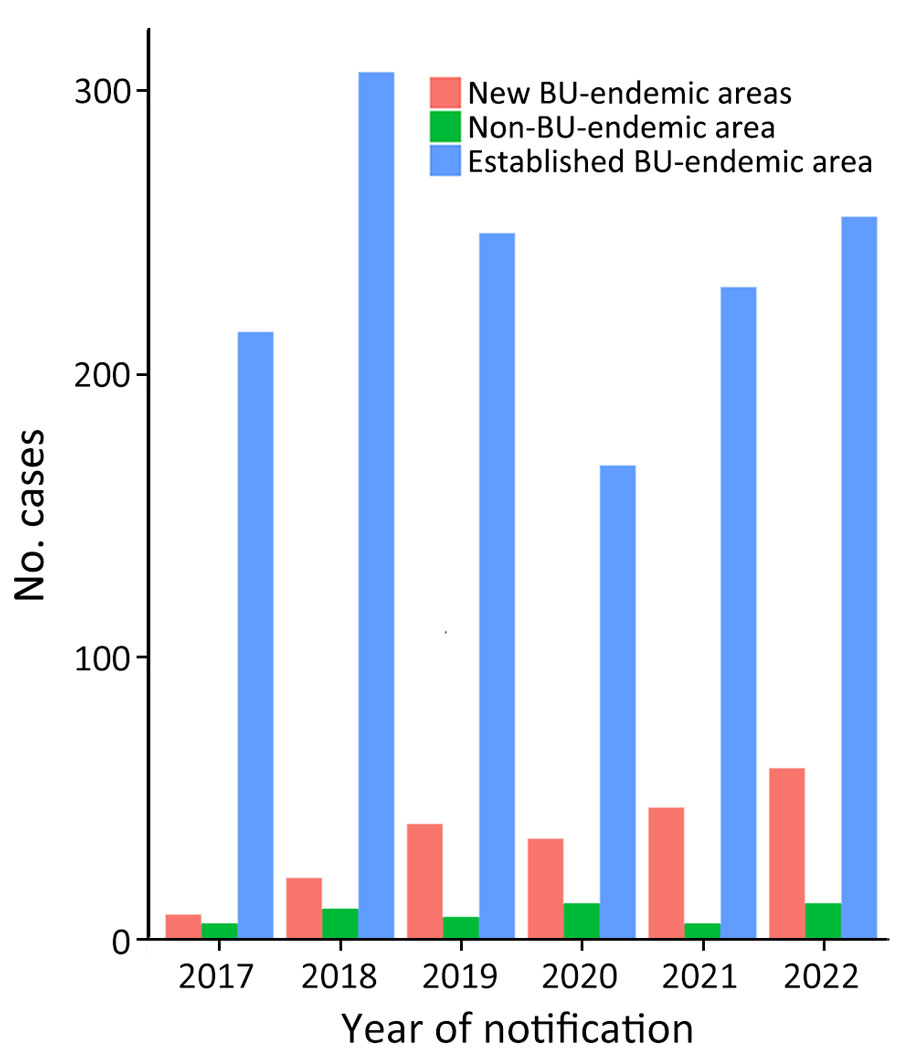Volume 31, Number 3—March 2025
Synopsis
Epidemiology of Buruli Ulcer in Victoria, Australia, 2017–2022
Figure 3

Figure 3. BU primary exposure locations, by region and year, Victoria, Australia, 2017–2022. BU, Buruli ulcer.
Page created: February 04, 2025
Page updated: February 28, 2025
Page reviewed: February 28, 2025
The conclusions, findings, and opinions expressed by authors contributing to this journal do not necessarily reflect the official position of the U.S. Department of Health and Human Services, the Public Health Service, the Centers for Disease Control and Prevention, or the authors' affiliated institutions. Use of trade names is for identification only and does not imply endorsement by any of the groups named above.